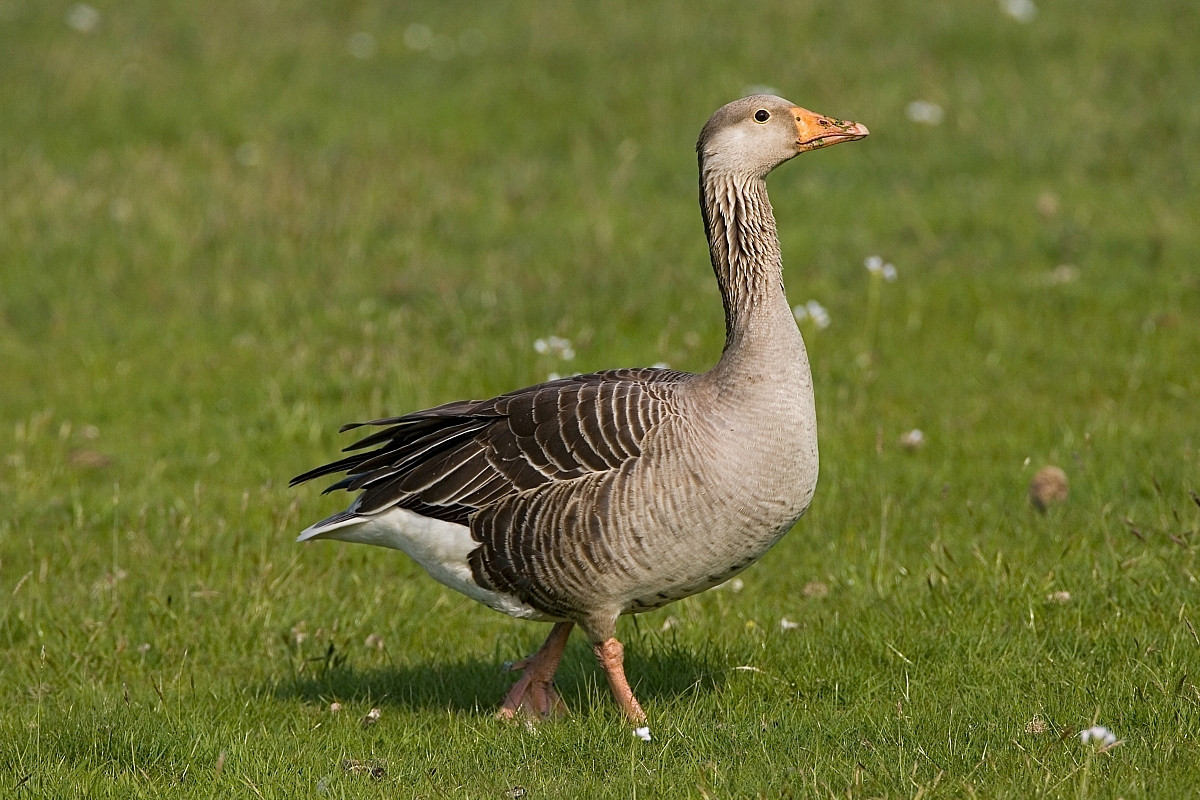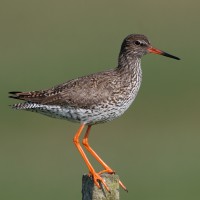Description
At Podersdorfer Pferdekoppel a great diversity of waders and ducks can usually be seen, and Greylag Goose like to rear their young in the area. Pygmy Cormorant, Little Egret, and Eurasian Spoonbill are also often observed here. The windbreaks and little patches of forest and bushes often harbour a number of interesting species, not just during the migration periods. The list of rarities recorded here underscores the significance of this attractive stretch of land.
Details
Access
The route can be driven by car, but it is also heavily used by bicyclists (especially on warmer weekends) and it is important to drive cautiously and slowly! The route begins at the Georgshof, a riding stable best reached from Podersdorf. It pays to stop immediately south of the Georgshof, particularly in wet years, because the adjacent horse paddock is often frequented by Common Redshank,, Northern Lapwing, Ruff, and Greylag Goose. Eurasian Hoopoe is also frequently heard here in April. The paved road bordering the paddock to the south is popular with photographers when water levels are high and Garganey, Northern Shoveler, Northern Lapwing, and Common Redshank forage for food quite close to the road. Grasshopper Warbler, Savi's Warbler, Sedge Warbler, and Reed Bunting can be heard from the other side of the road. Continuing on to the road closest to the lake (the B20 bike path), the old windbreak soon opens up and reveals a view of the lakeshore area, the Podersdorfer Pferdekoppel. A first proper stop should be planned after just a few metres, at a small observation tower. This site offers a view of a small resting area for gulls as well as good viewing of the species mentioned in the site’s general information. Furthermore, Western Marsh Harrier breed in the narrow reed belt in the background. After an enclosure with Mangalica pigs (left of the road), one can make a small detour to the Hölllacke, which is a breeding site for Garganey, Northern Shoveler, Avocet, and Little Ringed Plover, among others. It is also a good place to observe other waders during migration. Back at the lakeshore area, a climb up the big observation tower is an absolute must-do. This bird’s eye perspective offers a great view of the small-scale agricultural landscape littered with saline lakes and meadows, the lakeshore area, Lake Neusiedl, and the Rust Hills and Leitha Mountains in the distance. The bushes near the tower, meanwhile, are a reliable place to see Barred Warbler. European Stonechat and Red-backed Shrike can also be reckoned with here – the former being best observed in early spring. The height of the vegetation increases in the southern part of the route and makes the bushes and windbreaks there especially attractive for passerines during migration. Eurasian Hoopoe and Syrian Woodpecker are two further species of this habitat.
Terrain and Habitat
Wetland , Grassland , Reedbeds , Scattered trees and bushes , Steppe , Mud flatsConditions
Dry , Open landscape , FlatCircular trail
NoIs a telescope useful?
Can be usefulGood birding season
Summer , SpringBest time to visit
Spring , SummerRoute
Unpaved road , Paved roadDifficulty walking trail
EasyAccessible by
Foot , Bicycle , CarBirdwatching hide / platform
YesExtra info
Lake dune and shelf ice drift: If the temperatures rise quickly after a very cold winter, the prevailing north-westerly winds can cause shelf ice drift events: ice mats drift towards the shore and can often pile up to a height of a few metres. This phenomenon regularly causes the reeds to be pushed back mechanically – especially on the eastern shore of Lake Neusiedl, which explains why the reed belt is much narrower here than on the opposite shore. Podersdorf is a particularly good place to observe this natural event, because it is the only natural reed-free section of the shore of Lake Neusiedl (aside from the lakefront resorts). The lake dune between Weiden am See and the Sandeck, 25 kilometres long and up to two metres high, was also created by the mighty forces of this ice drift piling up huge quantities of loose sand from the lake to form a sand wall. The lake dune is approximately 2000 years old. Further slight elevations to the east of the dune suggest that a number of similar walls were formed by the lake over the course of time. Due to the sandy substrate and thanks to grazing, a very specific fauna and flora with highly specialised species of arid habitats were able to develop. Both the digger wasp Bembix rostrata and the funnels of antlions can be found here.

.jpg)

.jpg)
